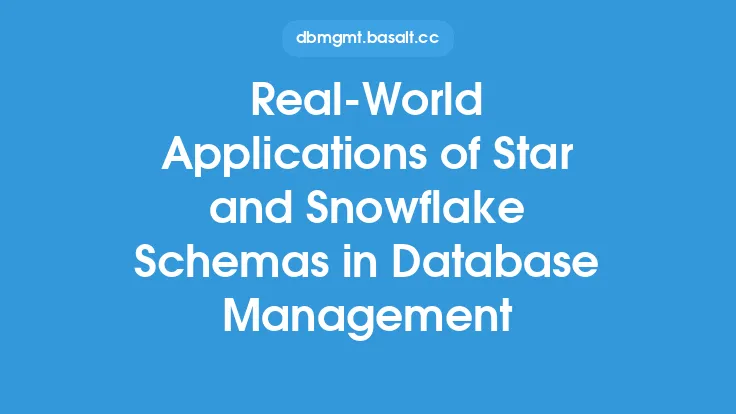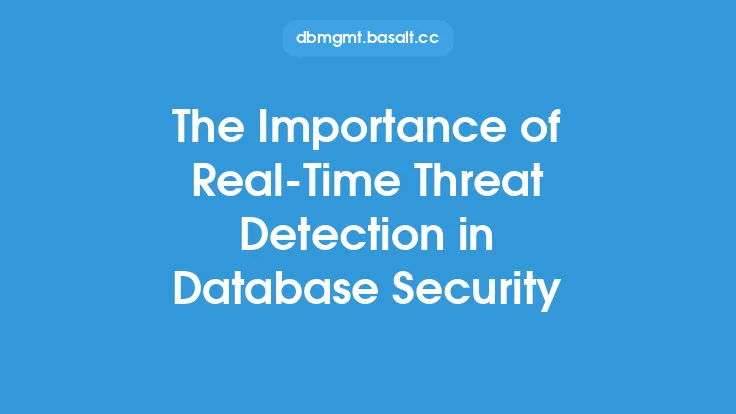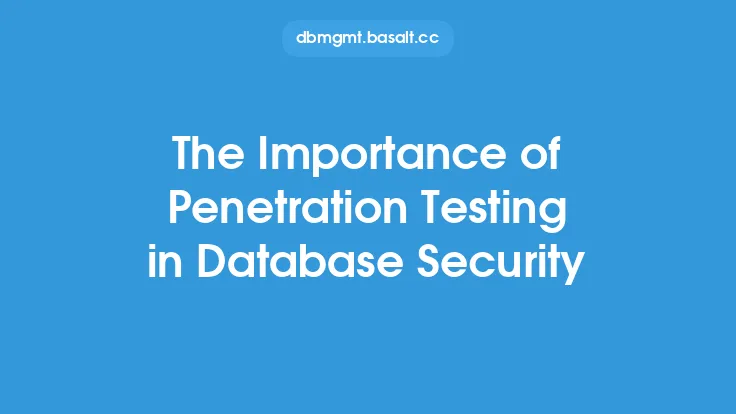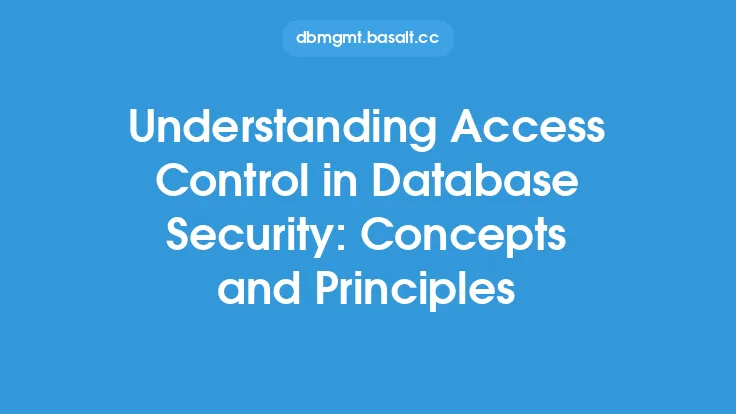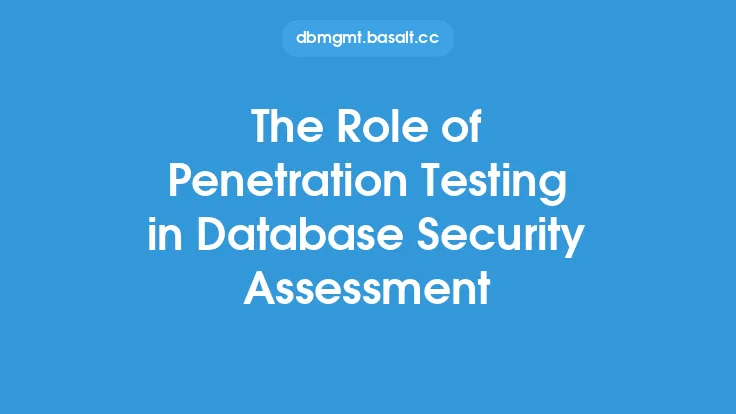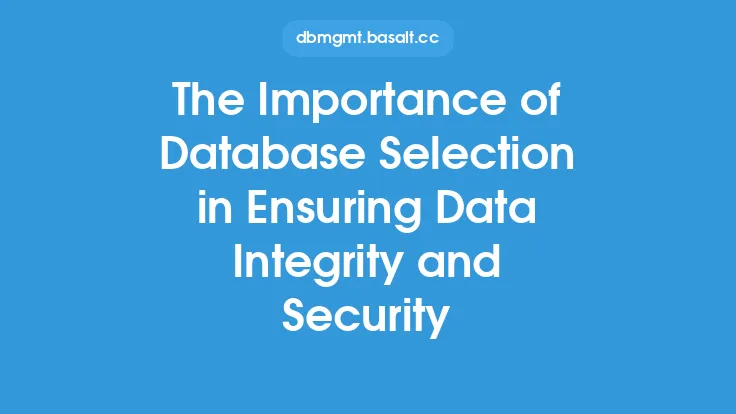Database security is a critical aspect of protecting sensitive data, and access control is a fundamental component of this security. Access control refers to the mechanisms and policies that regulate who can access, modify, or delete data in a database. In this article, we will explore real-world examples of access control in database security, highlighting the various techniques and strategies used to protect data from unauthorized access.
Introduction to Access Control Mechanisms
Access control mechanisms are designed to ensure that only authorized users can access or modify data in a database. These mechanisms can be categorized into several types, including authentication, authorization, and auditing. Authentication mechanisms verify the identity of users, while authorization mechanisms determine what actions users can perform on the data. Auditing mechanisms track and record all access and modifications to the data, providing a trail of evidence in case of security breaches. In real-world scenarios, access control mechanisms are often implemented using a combination of these techniques.
Role-Based Access Control in Enterprise Databases
Role-based access control (RBAC) is a popular access control model used in enterprise databases. In RBAC, users are assigned roles based on their job functions, and each role is associated with a set of privileges and permissions. For example, a database administrator may have a role that grants them full access to the database, while a data analyst may have a role that only allows them to read data from specific tables. RBAC is widely used in enterprise databases because it provides a flexible and scalable way to manage access control. Companies like Oracle and Microsoft use RBAC in their database management systems to provide fine-grained access control.
Attribute-Based Access Control in Healthcare Databases
Attribute-based access control (ABAC) is another access control model that is gaining popularity, particularly in healthcare databases. In ABAC, access control decisions are based on a set of attributes associated with users, data, and environment. For example, a doctor may be granted access to a patient's medical records based on their role, department, and location. ABAC provides a more fine-grained access control than RBAC, as it takes into account multiple factors when making access control decisions. Healthcare organizations like the US Department of Veterans Affairs use ABAC to protect sensitive patient data.
Mandatory Access Control in Government Databases
Mandatory access control (MAC) is a access control model that is widely used in government databases. In MAC, access control decisions are based on a set of rules that are mandatory and cannot be changed by users. For example, a government agency may have a database that contains classified information, and access to this information is restricted to users with a certain clearance level. MAC provides a high level of security, as it ensures that access control decisions are based on a set of predefined rules. Government agencies like the US Department of Defense use MAC to protect sensitive information.
Discretionary Access Control in Small Business Databases
Discretionary access control (DAC) is a access control model that is widely used in small business databases. In DAC, access control decisions are based on the discretion of the owner or administrator of the database. For example, a small business owner may grant access to their database to a contractor or consultant based on their trust and confidence in the individual. DAC provides a flexible way to manage access control, as it allows the owner or administrator to make access control decisions on a case-by-case basis. Small businesses like startups and sole proprietorships use DAC to manage access to their databases.
Access Control in Cloud Databases
Cloud databases provide a unique set of challenges when it comes to access control. Cloud databases are often multi-tenant, meaning that multiple customers share the same database instance. This requires cloud database providers to implement robust access control mechanisms to ensure that each customer's data is protected from unauthorized access. Cloud database providers like Amazon Web Services (AWS) and Microsoft Azure use a combination of access control mechanisms, including RBAC, ABAC, and MAC, to protect customer data.
Access Control in NoSQL Databases
NoSQL databases provide a unique set of challenges when it comes to access control. NoSQL databases often have flexible schema designs, which can make it difficult to implement traditional access control mechanisms. NoSQL database providers like MongoDB and Cassandra use a combination of access control mechanisms, including RBAC and ABAC, to protect data from unauthorized access. NoSQL databases also provide features like data encryption and access control lists to further protect data.
Best Practices for Implementing Access Control
Implementing access control in database security requires careful planning and execution. Here are some best practices to follow: (1) use a combination of access control mechanisms, including authentication, authorization, and auditing; (2) implement role-based access control to provide fine-grained access control; (3) use attribute-based access control to provide more fine-grained access control; (4) regularly review and update access control policies to ensure they are aligned with business requirements; (5) provide training to users on access control policies and procedures; and (6) continuously monitor and audit access control logs to detect and respond to security breaches.
Conclusion
Access control is a critical component of database security, and there are various techniques and strategies used to protect data from unauthorized access. Real-world examples of access control in database security include role-based access control in enterprise databases, attribute-based access control in healthcare databases, mandatory access control in government databases, and discretionary access control in small business databases. Cloud databases and NoSQL databases provide unique challenges when it comes to access control, and require robust access control mechanisms to protect customer data. By following best practices for implementing access control, organizations can ensure that their data is protected from unauthorized access and that they are compliant with regulatory requirements.
